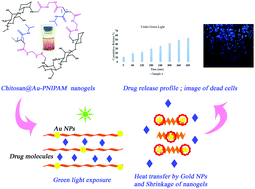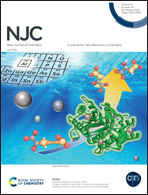Magnetic and light-responsive nanogels based on chitosan functionalized with Au nanoparticles and poly(N-isopropylacrylamide) as a remotely triggered drug carrier
Abstract
In the past few years, laser-assisted methods have greatly influenced biomedical studies due to less invasive ways of treatment and higher precision. New stimuli-responsive drug carriers are still explored by scientists to achieve a better spatiotemporal control of drug carriers by using visible to NIR light instead of phototoxic ultra-violet irradiation. Due to their biocompatibility and high loading capacity of hydrophilic drugs, hydrogels have been used extensively in this area. However, poor cellular uptake and restricted loading of hydrophobic drugs are challenges that should be addressed. In this study, a previously known nanogel system based on chitosan and poly(N-isopropylacrylamide) was synthesized and optimized to reach a light-responsive drug carrier. Gold nanoparticles (GNPs) were formed in situ on the surface of chitosan to act as photothermal transducers. The chemical structure optimization led to spherical and uniform nanogels with high photothermal conversion ability. The effects of the loading of Fe3O4 nanoparticles on the drug release profiles were also examined. This comprehensive study revealed the considerable potential of the achieved intelligent nanogel as a visible light-sensitive drug carrier.



 Please wait while we load your content...
Please wait while we load your content...